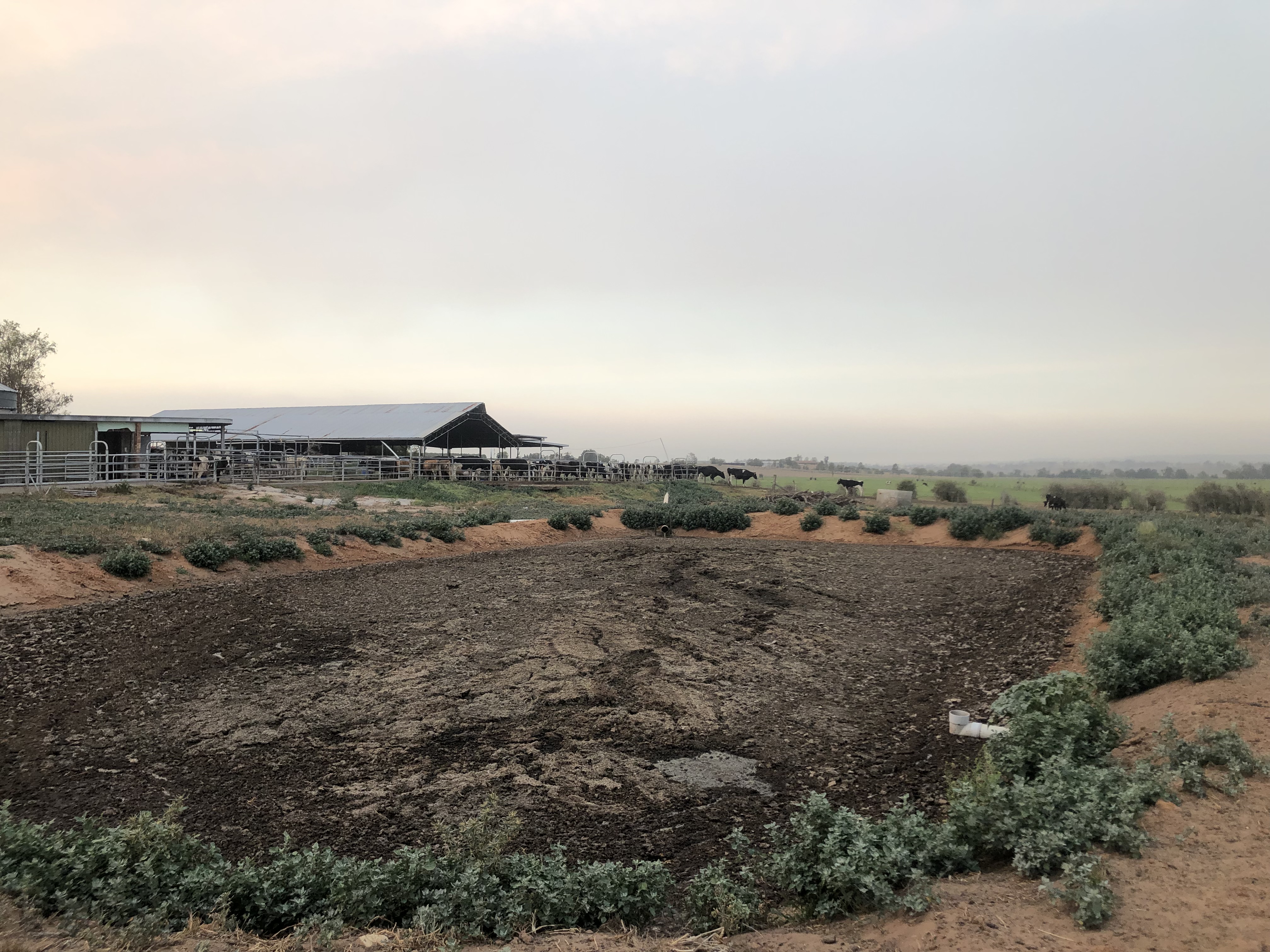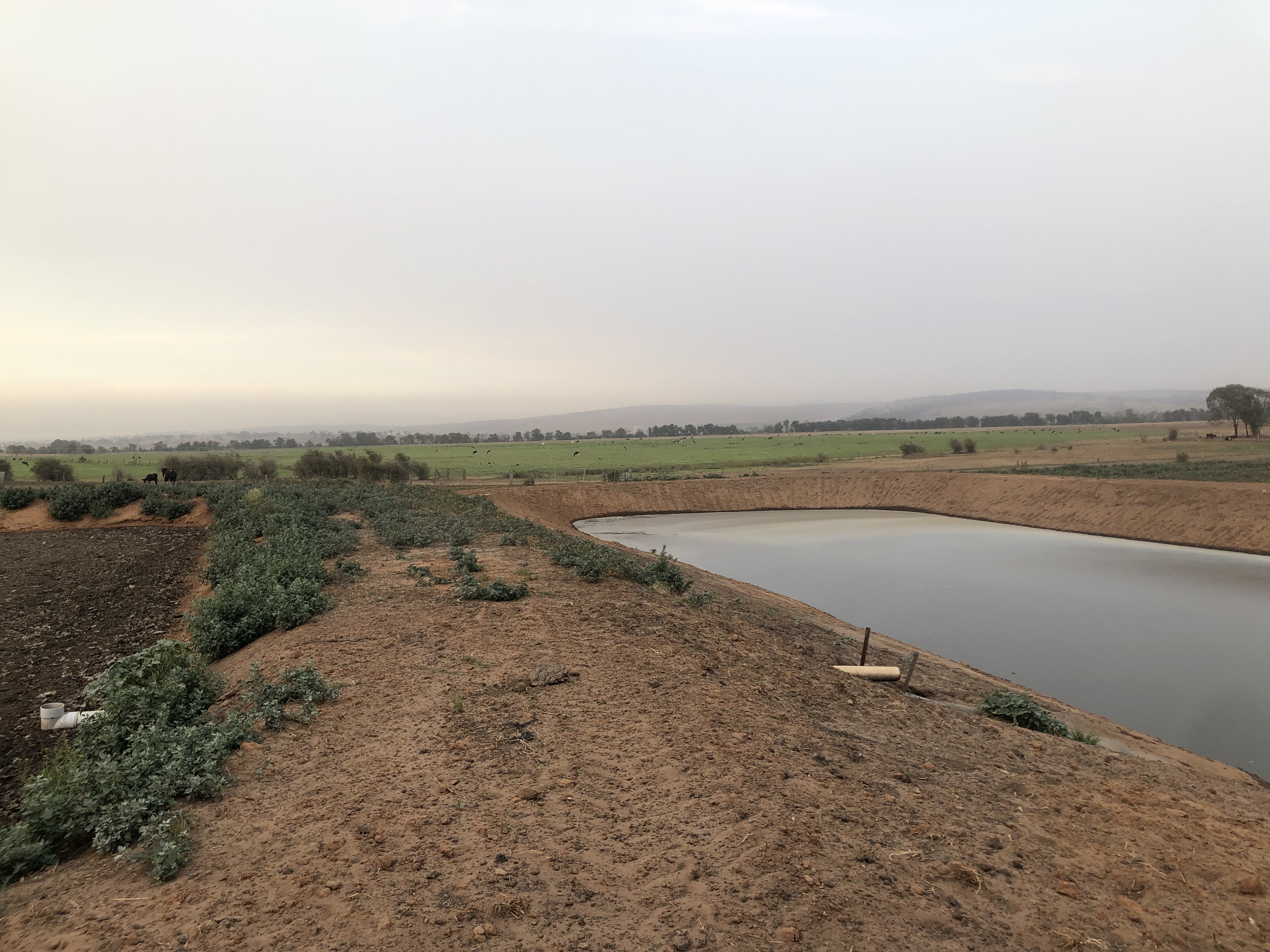Micro-catchment
Case Study
2019 Lion Dairy Pride Landcare Grant
| Grant Recipient: | Christine Farr |
| Farm/Dairy Name: |
AG and CE Farr Trading as Palmdale Holsteins |
| State/Town: | Singleton, New South Wales |
| Project Name: | Micro-catchment |
| Grant Amount: | $10,000 |
Background
On 404 hectares, the Farr family manage a herd of 480 Friesian dairy cattle located in the NSW Upper Hunter region. With the growth of the dairy herd the 30-year-old dairy layout and buildings no longer manage effluent in an efficient and safe way.
The the extra pressure the effluent pit and spreader were not capturing all the dairy runoff. This was resulting in the runoff spilling into the catchment and causing erosion along the edges of the concrete dairy podium and the adjacent pasture.
Christine Farr said the family were concerned about the environmental issues, but saw an opportunity to capture 100 percent the effluent and use it as a fertiliser.
Using the effluent as a fertiliser also works in with the family’s bio-solid fertiliser strategy aimed at improving the pastures that are the main source of cattle feed.
After finding out about the Lion Dairy Pride Landcare Grants, Christine decided to apply for funds to assist I the works and infrastructure needed to create three ponds that would capture the effluent.
Project Overview, Purpose and Goals
In order to capture the effluent run-off Christine said the dairy needed to carry out earthworks to create three ponds that could handle the estimated 33,000 litres of water and effluent created each year.
The ponds would effectively become a ‘micro-catchment’ that will prevent the erosion caused by the current system, and ensures dairy meets government environmental regulations.
Once completed, Christine said the new system would use gravity, and a pipe and flume network to capture the run-off. As an added bonus this system would create a source of recycled water that could be used to wash down the yards.
Christine said an important goal of the new system is to cut down on the amount of fertiliser that had to be bought in while at the same time creating a more environmentally friendly operation.
Project Outcomes
A significant outcome of the project is the potential the capture of liquid and solid effluent to fertilise up to 70 hectares of pasture. They will achieve this by taking the captured wastewater and connecting it with a pivot system to irrigate 50 hectares with solid waste spread over 20 hectares.
The combined three ponds will capture enough effluent to effectively cut their fertiliser by an estimated 70 percent.
In addition, Christine is expecting environmental benefits as capturing 100 percent of the effluent stops it making its way into the local catchment and eroding pastures.
The earth dug out for the ponds was used to build a mound planted with native trees to act as a barrier to hide the effluent ponds.
Conclusion
Christine said two of the three ponds have been created with the assistance of Scott McDonald who designed the new system and an earthworks contractor who worked on time and to budget.
The system is relatively simple and does not rely on pumps to move the waste from the dairy to the ponds due to the slope of the land.
It’s still early on in the implementation of the ponds and the Farr family have yet to see the full benefit of the new system but are expecting it to meet their goals.
“We now capture all runoff from the dairy, so we are seeing the environmental benefits and we expect to see more as we fully utilise the effluent as a fertiliser,” Christine said.
Christine said the Lion Dairy Pride Landcare Grant helped their business to become more sustainable.
“The Lion Dairy Pride Landcare Grant has been an enormous help in difficult climatic conditions,” Christine added.





